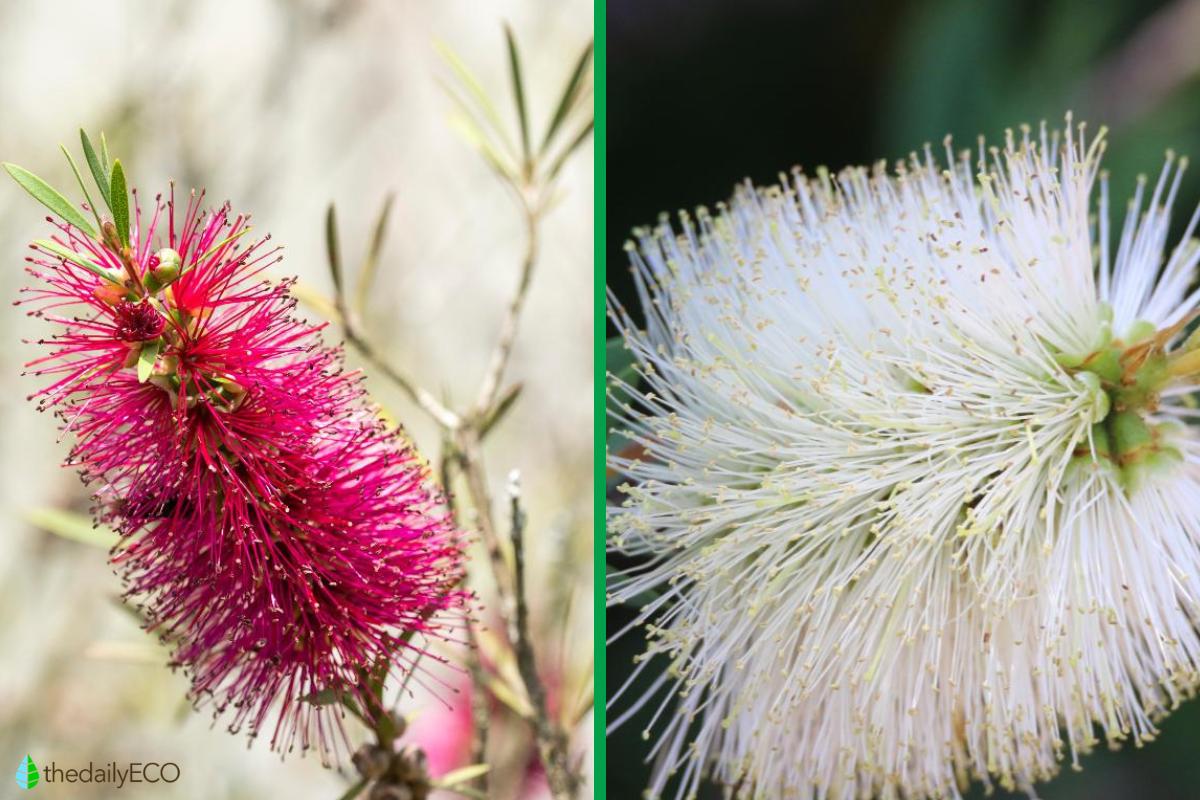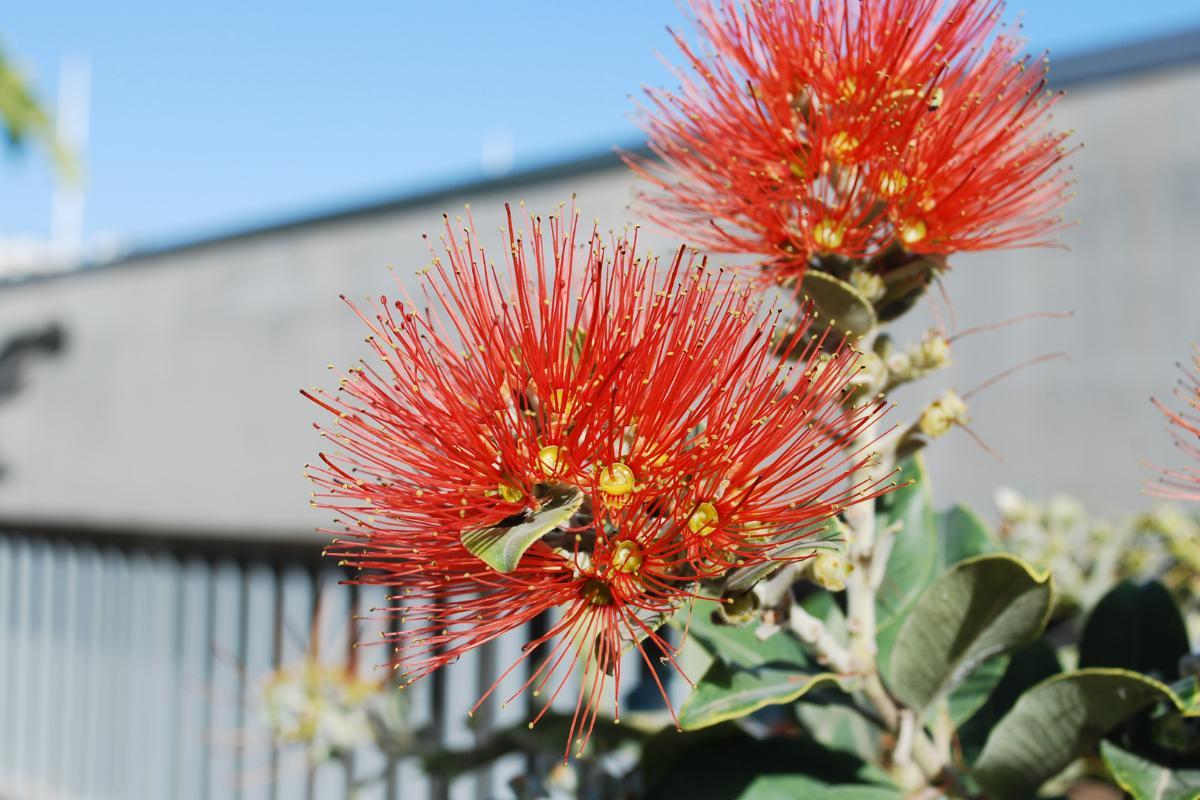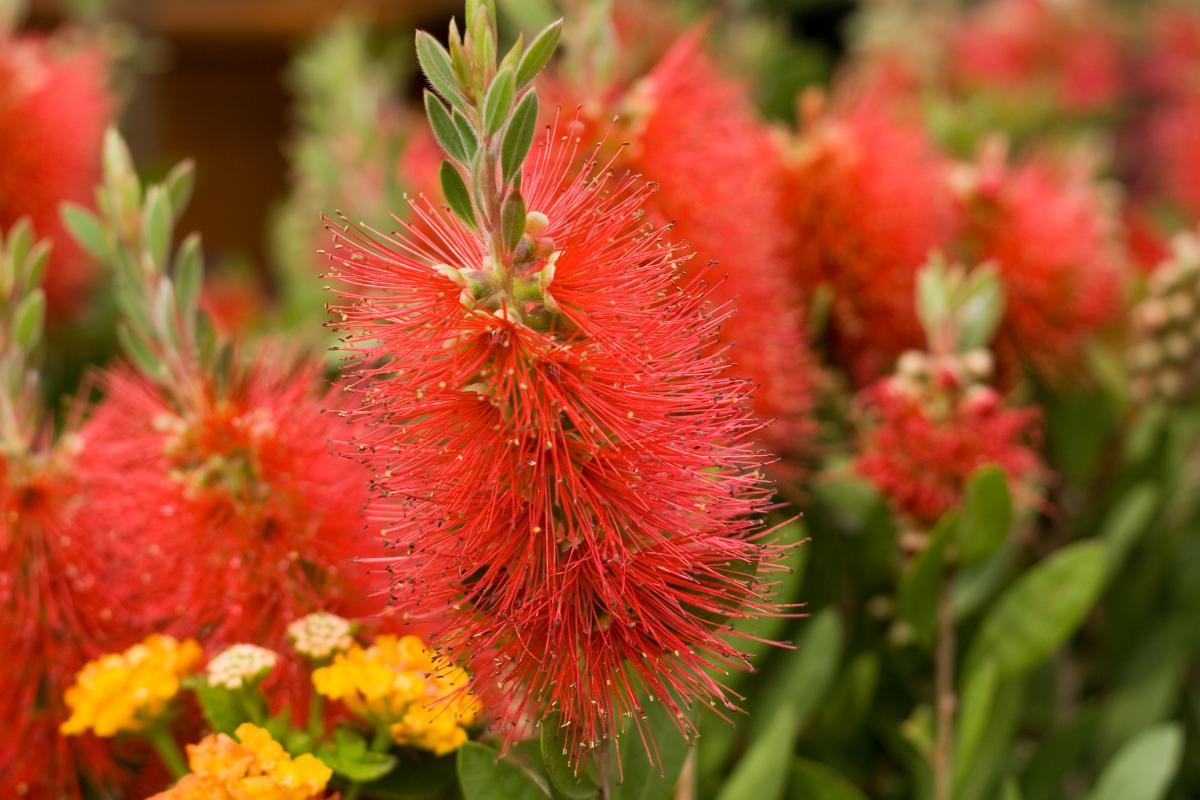Bottlebrush Plant Varieties and Care


Known as bottlebrushes due to the cylindrical shape of their flower, Callistemon citrinus is a species often known as common bottlebrush. This is because it is one of the most widely cultivated types in gardens and homes across the world. There are also many varieties of bottlebrush known as cultivars. These include C. citrinus 'Mauve mist', C. citrinus 'Splendens', C. citrinus 'Perth pink' or C. citrinus 'White Anzac'.
Bottlebrush is known for attracting pollinators, but it is particularly associated with hummingbirds who find it easy to dip their beak into these vertical flowers. Although they are of Australian origin, they can be grown all around the world with the right care. Learn more with thedailyECO as we discover the different bottlebrush plant varieties and care.
Characteristics of bottlebrush plants
Although we are looking at varieties of common bottlebrush (Callistemon citrinus), it is important to note there are many types plant in the genus Callistemon which are also known as bottlebrush. They all share certain characteristics.
- The taxonomy of the common bottlebrush shows they belong to the clade Angiospermae, meaning they are flowering plants. They are in the family Myrtaceae, commonly known as the myrtle family. They are from the tribe Melaleuceae which all originated in Southeast Asia and Oceania. Its scientific name is Callistemon citrinus, the genus meaning ‘beautiful stamens’ in Greek and the species referring to its lemony aroma. In some cases, the common bottlebrush is ranked under the alternative species name Melaleuca citrina.
- The flowers emerge in clusters, with all the stamens pointing outward. This gives them a round brush appearance. In this species are they are of a characteristically intense red color.
- They appear throughout the year for staggered periods, but their strongest flowering is in May. They are 10 centimeters long. Learn more about flowering plants with our article on the difference between angiosperms and gymnosperms.
- A woody fruit is produced from this plant in a capsule which can remain attached to the branch for a long time.
- It is a type of perennial plant with thin, lanceolate leaves that. When broken, give off a peculiar aroma reminiscent of lemon. Learn more about other plants that smell like lemon.
- They are sparse in appearance, but they have much ornamental value despite this fact. The branches grow arched downwards. It measures 2 meters in height at 2 years old. In its natural environment it grows up to 8 meters. It grows as a shrub, but can be shaped into a tree by keeping the stems together at the base.
If you would like to grow common bottlebrush at home, you should know it can be quite expensive to purchase already cultivated. You can see for yourself with our price check below:

Varieties of red callistemus
Due to the great appeal of the bottlebrush, many varieties have been developed to highlight certain characters. Some of the cultivars that we can find are:
- C. citrinus 'Mauve mist': flower stamens are pink and 10 centimeters long. They are only seen in summer. The color fades as they age.
- C. citrinus 'Splendens': large, 15 centimeters long, dark red flowers and stiff leaves.
- C. citrinus 'Perth pink': also known as crimson bottlebrush. Despite this name, the juvenile leaves are pink, turning green as they mature. The bush is compact, and the flowers are also pink 10 centimeters long.
- C. citrinus 'White Anzac': during spring and summer it produces large, 15 centimeters long flowers with completely white stamens. As they ripen, they turn slightly pink.

Uses of the bottlerbush in gardening
Although common bottlebrush is a popular ornamental plant, it is also has some very important practical uses for gardeners:
- Pollinator: the bottlebrush and its cultivars attract many hummingbirds, bringing life to the garden, while providing shelter for these pollinators. Learn more about the different types of pollinator animals.
- Public parks: this plant is very common in public areas as a shrub thanks to its low maintenance, but it adds color and attractiveness.
- Potted plant: it can be kept in a pot, ideal for patios that do not have soil or firm ground.
- Greenhouses: in very cold climates it is usually kept under a greenhouse where it receives a lot of light. This use is mainly in special collections such as botanical gardens that have the infrastructure.
- Hedge partition: since bottlebrushes grow as a shrub, they can be grouped together to form living divisions in the garden.
- Indoor ornamental: due to its adaptability to a limited potted substrate, it can be kept as a colorful indoor plant.
- Bonsai: this shrub can be cultivated to miniaturize it and maintain it as a small tree with the bonsai technique, always meeting the substrate, fertilizing, pruning and wiring requirements that are required.
Learn more about caring for caring for these types of small plants with our article on kiryuzuna soil for Bonzai.

Bottlebrush light and temperature
Bottlebrush needs warm temperatures to thrive, but it must be in full sun or semi-shade. It resists temperatures down to -3 ºC/26.6 ºF and also occasional wind.
It is important to mention that the plant can be damaged during frost, but this is completely normal. To avoid injury, it is recommended to place it next to a wall facing south. When keeping the plant indoors, we can better control the temperature and light.

Soil for bottlebrush plants
Soil for bottlebrush must be fertile, with excellent drainage and aeration. To achieve this type of soil, a mixture of universal substrate is prepared in equal parts of nutrient-rich worm castings with equal parts of peat. We will need to add a handful of tepojal to promote drainage and additional nutrition. It is recommended to apply a top layer in the form of mulch during autumn and spring. This can be straw or manure.
Fertilizer is not always essential, but it will be good to add a fertilizer to bottlebrush in mid-spring to boost flowering. Learn about the best homemade organic fertilizers for the garden with our related article.
Watering bottlebrush
Common bottlebrush and its varieties do not need much watering. It will be enough to do it twice a week. They can be tolerant of occasional droughts, but may need a little more water if it is particularly hot.
Pruning bottlebrush
Here are some general tips to pruning common bottle brush (Callistemon citrinus):
- Should be pruned in spring to eliminate the lesions presented during the frosts.
- Due to its irregular appearance, pruning is recommended to maintain its distinctive shape.
- Pruning can also be done to rejuvenate an old plant and this is done during the spring.

Common bottlebrush propagation
If you want to reproduce the common bottlebrush or its cultivar varieties, you can do it in one of the two following ways:
- Cuttings: the bottlebrush can be reproduced by woody cuttings taken from a healthy plant. They are cut with washed and sterilized tools. The cutting is then placed in the ground. A little rooting liquid may be added to ensure settlement. This propagation process should be done at the end of summer.
- Seeds: another way of propagating bottlebrush is through seeds. These can be found in specialized gardening stores. The seed will be placed in a worm castings-based substrate on a biodegradable seedbed, which will be kept under a plastic dome to retain moist heat and enhance germination. Once it reaches 10 centimeters tall and the stem is strong, it can be moved on to its final destination.
Now that you know the care of the Callistemon citrinus and its varieties, you may also be interested in our related articles on caring for caring for indoor ivy plants and caring for Chinese bellflower plants.
If you want to read similar articles to Bottlebrush Plant Varieties and Care, we recommend you visit our Plant care and cultivation category.
- Buczacki, S. (1997). Caring for garden plants. Spain: Tursen.
- Sullivan, M. (2004 ). The Trees of San Francisco. United States: Pomegranate.
- Royal Horticultural Society (n.d.) Callistemon citrinus search. Retrieved from: https://www.rhs.org.uk/plants/search-results?form-mode=true&query=Callistemon%20citrinus










